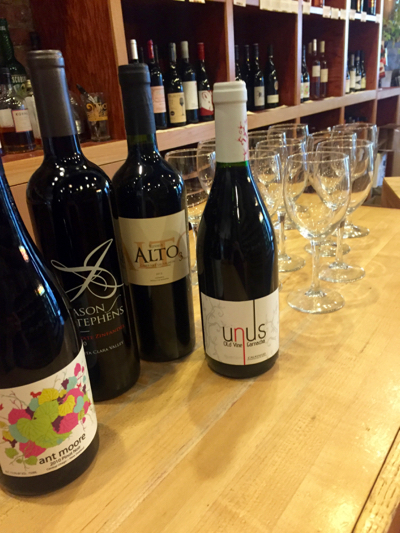In Wine on 12 Oct 2016
This week marks the last week of the year for Wine School, a class series I’ve been doing at the shop. I’m lucky enough to have a lot of freedom in what I teach and how, so these classes have been both a lot of fun and a tremendous learning opportunity for me. More than anything I’ve developed my philosophy about how wine should be understood and taught.

“Demystifying wine” is one of the biggest cliches of my particular generation of wine professionals. Every blogger and YouTuber seems to want to bring wine down from its pretentious pedestal to the masses, and frankly, it’s getting on my nerves. First of all, wine is hard, which is why you have to study and work hard for a lot of years to be able to make it, taste it, write about it, and analyze it at a professional level; that’s to be honored, not dismissed.
But hard isn’t snobby. Wine only became “pretentious” when the best examples became unaffordable to even the avid consumer, only in the last century, and with that development came an absolute deluge of inexpensive wine that was marketed to the “average” drinker. Yellow Tail came next, with the message that wine is a party (sponsored by the major wine corporation of your choice) and everyone is invited. The image of the stuffy, middle-aged sommelier or wine writer has been, just in the last few years, aggressively replaced by the young, tattooed (still white, still male, of course) somm, on a mission to find cool and hip wines to make you cool and hip.
Demystification? That’s been done to death. The media loves to publish stories about how the average drinker can’t tell the difference between a Corton-Charlemagne and Cupcake, which of course means that critics are lying and not at all that wine understanding and preference changes with one’s level of expertise. The idea that wine can be “outsmarted,” that wine writers and reviewers are all pulling the wool over our eyes and that spending more than $8 makes you a sucker, has actually begun to verge on the anti-intellectual––yet at the same time, I think consumers need advocates more than ever.
I’m not the first to note that there’s little continuity between the average customer and the industry. Debates about the meaning of “natural wine” rage on while the average shop customer only vaguely knows what the terms “biodynamic” and “organic” even mean in a wine context. Your somm having tattoos and piercings (I’m not picking on tattoos here; I have a couple, as everyone knows because this industry is not known for attracting people with a fear of attention) does not make the experience of tasting a wine for flaws any less intimidating for a layperson. Boxed wines are getting better, but customers still think they signal cheapness. And the most highly rated wines in the world are more out of reach than ever.
So it’s never been my goal to “demystify” wine in this class. I want the pixie dust. I want my students to have the same spark of amazement that I feel when I taste a really interesting bottle. I want them to be excited about a cool wine list, not stressed out. I want them to have the words to describe what they want so that retail folks like me can help them pick out something they’re really going to like. I’m not looking to put myself out of a job; I’m trying to build better, more empowered customers.
That means I spend more time on understanding wine structure and less time talking about notes of honey and apricot (though I explain those, too). I try to contribute more real-world anecdotes about the wine industry while spending less time on appellations and producers to know. I try to come up with a few “lifelines”––takeaway practical tips––for each lesson. My students are free to interrupt me and go off topic, because I want them to ask questions when they come to mind. We’ve had some of our best discussions that way.
I’m really thankful to my students for their awesome questions (almost always beginning with, “this is a weird/stupid/random question, but…”) and their candid responses to the wines in front of them. That’s valuable to me as a buyer, as a Diploma student, and as a teacher and wine communicator. I feel more confident in my understanding of not just what customers want, but why, and under what circumstances they’ll branch out from that. And I’m more confident than ever in the future of South African wine in the United States. Consistently the wines I pour from SA show among the best in my classes, and the stories behind the wines are just as compelling. I’m really looking forward to my future classes, and I feel really lucky to have an outlet that just makes me love wine even more.